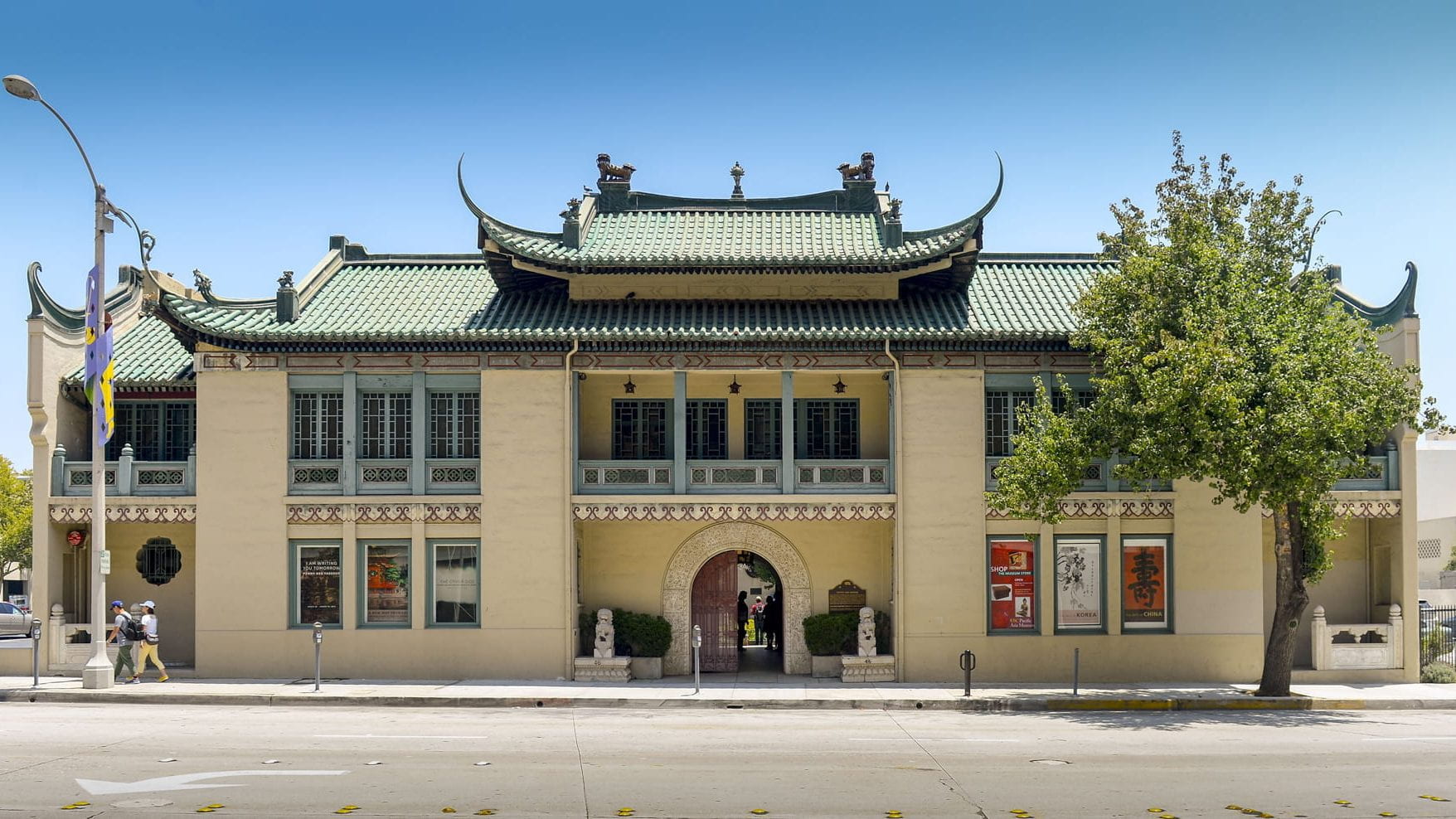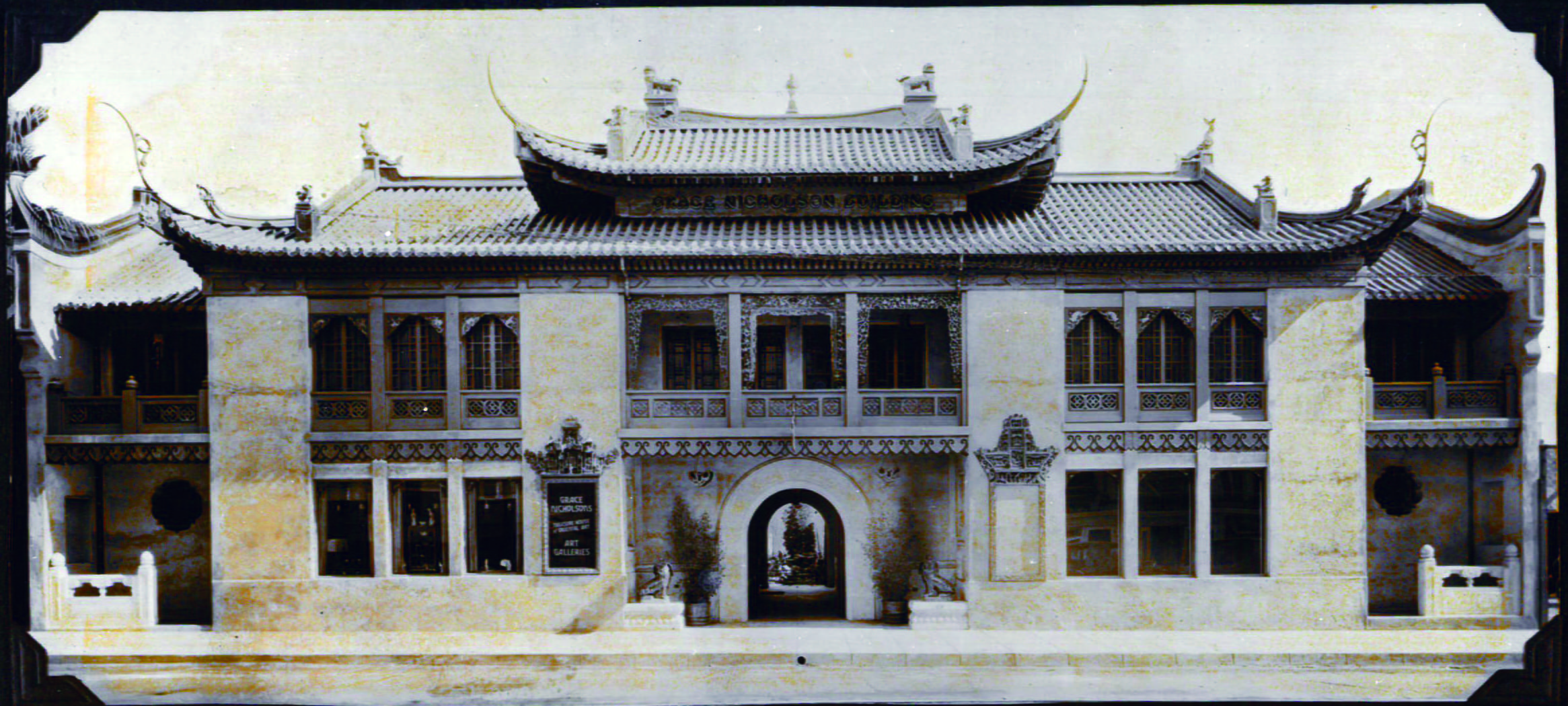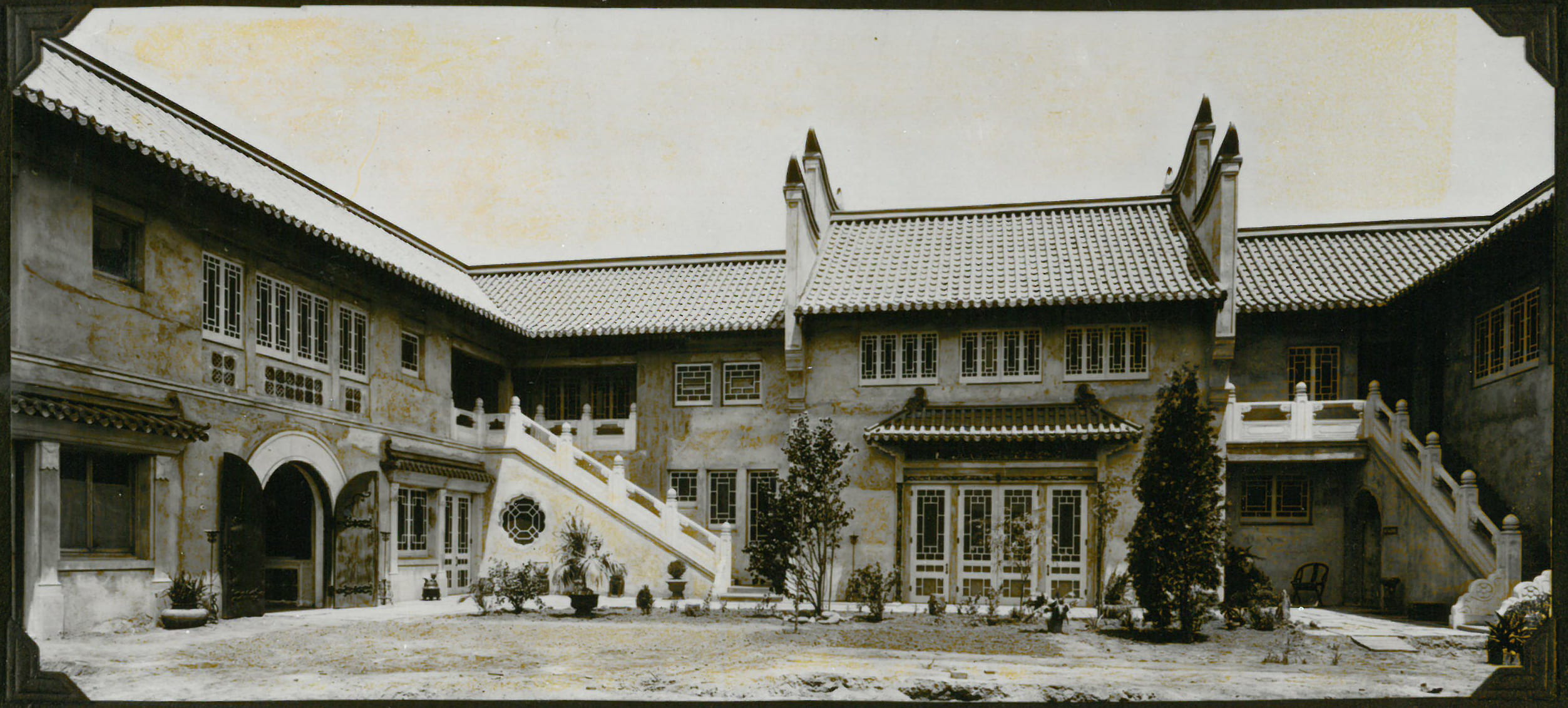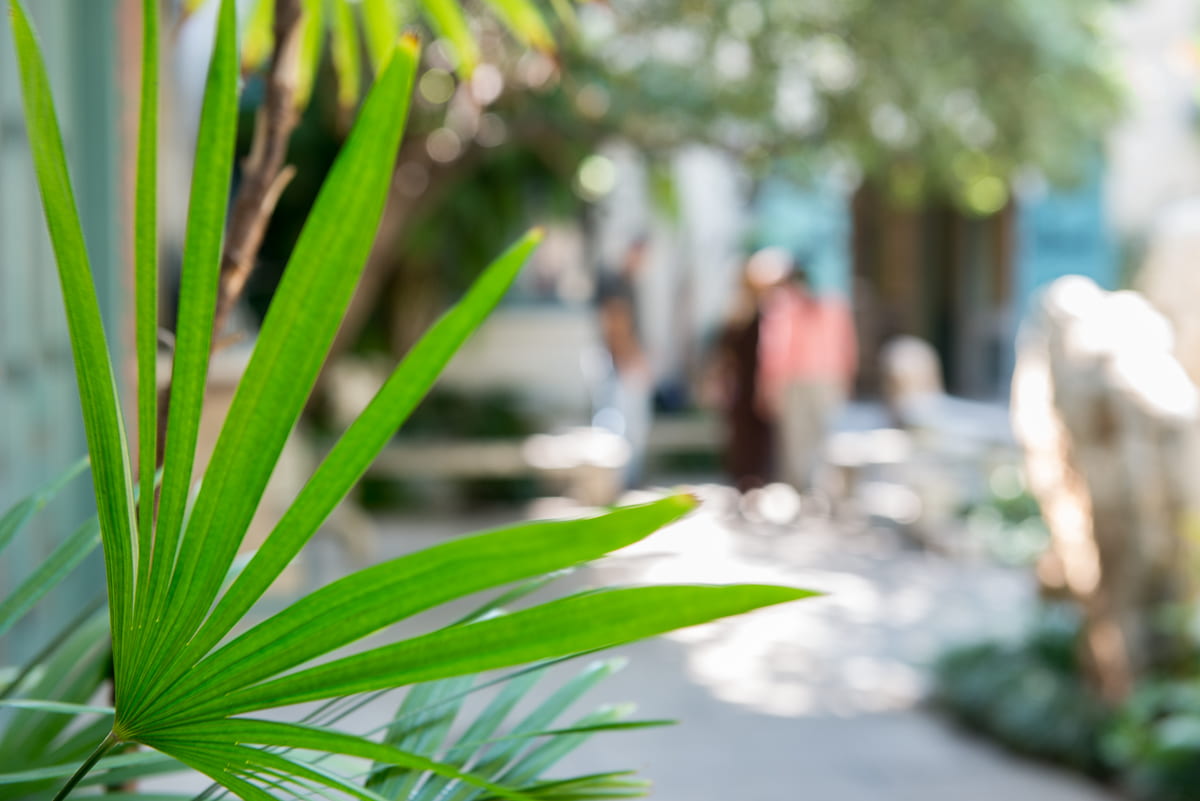Established in 1971, the museum is one of few U.S. institutions dedicated to the arts and culture of Asia and the Pacific Islands, serving the city of Los Angeles and the Greater Southern California region. USC Pacific Asia Museum creates inspiring encounters with the art, history and culture of Pacific Asia to promote intercultural understanding in the service of elevating our shared sense of humanity.
The Grace Nicholson Building

Grace Nicholson was born on December 31, 1877 in Philadelphia. With a modest inheritance, she moved to California in 1901 and soon after set up a small curio shop on Raymond Avenue in Pasadena. She became interested in Southwestern Indian handiwork through two of her early customers who had been involved in archaeological excavations in Arizona. She invested the few hundred dollars she had remaining on Indian basket collections for her curio shop. Over time she became increasingly interested in Native American art and culture and would frequently travel the western United States to buy directly from the weavers and basket makers. She carefully documented weaving techniques and designs and photographed daily life. Because of her research on and knowledge of Native American culture, Grace Nicholson became highly respected in the field of anthropology and was elected to the American Anthropological Association in 1904.

The business outgrew the Raymond Street location by 1907 and she moved to 46 N. Los Robles, the address that would later become home to the Grace Nicholson Building.
In 1924 Grace Nicholson hired the leading Pasadena architectural firm Marston, Van Pelt and Maybury, to translate her pictures and ideas into a serenely beautiful and impeccably researched building on North Los Robles Avenue, that by some accounts could not be duplicated today at any cost. Her illustrations were incorporated into a design which carefully followed the Imperial Palace Courtyard style, used in the construction of major buildings in Beijing (Peking). Grace Nicholson made sure every detail was correct by having the roof tiles, stone and marble carvings, and bronze and copper work imported directly from China, or faithfully executed by Pasadena area craftsmen, following plans and photographs of authentic Chinese examples. The arched entrance is an exact copy of the Buddhist library in Beijing. The upturned roofline is meant to prevent evil spirits from landing on it, while antique ceramic dogs on the roof keep watch for enemies. Cloud patterns and lotus finials on the balustrades of the four courtyard stairways represent the ascent to enlightenment and are copied from the marble bridges of Nai-chin-shin-chiao.
As the lines and details of the new structure began to take shape, Pasadena took note. “It is far and away the most beautiful building of which Pasadena can boast,” commented the prestigious Southland Magazine in 1925. The newly completed structure received an award from the American Institute of Architects, and quickly became a noted landmark.
Grace Nicholson referred to her creation as “Chia”, a word with distinct meaning in two cultures particularly associated with her. In American Indian legends, the word refers to an incredibly nutritious seed that could sustain someone for long periods of time. The Chinese meaning for chia is “sacred vessel.” An article about the building in a 1927 issue of House Beautiful stated that “Chia is like a dream, and dreams are usually indescribable, but even grossly exaggerated praise would do the place scant justice.”

Grace Nicholson opened the first half of the building on March 11, 1925, and construction of the rectangular, open courtyard was completed in 1929. The building became a center for the arts in Pasadena, and was host to many cultural organizations. The first floor consisted of galleries in which Grace displayed and sold museum quality American Indian and Oriental art objects, as well as the work of noted local, national and international living artists. The second floor housed more galleries, an auditorium for exhibition, education and lectures, as well as Miss Nicholson’s private apartment.
Grace Nicholson gave the building to the City of Pasadena in 1943 for art and cultural purposes, with the stipulation that she would retain her private rooms until her death. She shared the building with the Pasadena Art Institute until she passed away in 1948. In 1954, the Pasadena Art Institute changed its name to the Pasadena Art Museum and occupied the building until 1970, when it moved to its new location at Orange Grove and Colorado Boulevards and became the Norton Simon Museum.
The Pacificulture Foundation moved into the building in 1971. In 1987 the Foundation bought the structure once known as “The Grace Nicholson Treasure House of Oriental Art,” and subsequently became Pacific Asia Museum. In November 2013, the museum partnered with University of Southern California to become USC Pacific Asia Museum.
The Grace Nicholson Building is itself one of the great treasures of the museum, being an important and extraordinary example of Chinese architecture. It has been designated a Cultural Heritage Landmark by the cities of Pasadena and Los Angeles. In 1976 the building was placed on the National Register of Historic Places, and in 1989 was declared a Historical Landmark by the State of California. It is presently being considered for National Historic Landmark status.
Courtyard & Garden

USC Pacific Asia Museum’s courtyard is inspired by the classic gardens of China where architecture is in harmony with nature. It contains many of the traditional plants and decorative elements that support this unity. While the layout, pond and plants have changed over the years, the courtyard remains a focal point, providing transition between public and private space.
Traditional elements in the courtyard include:
Taihu Rocks –
Limestone rocks taken from China’s Lake Tai are popular for their naturally eroded beauty and symbolism of longevity. The rocks in USC Pacific Asia Museum’s courtyard were formed by similar geologic processes in the Flint Hills of Kansas.
Pine, Bamboo and Plum or “The Three Friends of Winter.” Symbolizing endurance, flexibility and resilience, the pine stays green all year round, the bamboo bends in the wind, and the long-lived plum tree blooms in the winter.
Dragons
can be seen perched on the ends of the roof, entwining on the eastern wall’s circular seal and carved into the gold friezes of the courtyard doorways. The most important of the mythical beasts, dragons bring rain, symbolize fertility, and represent high rank and power.
Lotus flowers, emerging pristine from muddy ponds, are a symbol of purity. Carved lotus buds decorate the staircase balustrades and, in the summer, lotus flowers can often be found blooming in the courtyard pond.
The peony is the most popular botanical motif in China. In the building’s peony windows, the flower shape is superimposed on a square, a symbol for the world.
Stone lions or “Foo Dogs,” are always found in pairs and protect against evil. In each pair the male holds a ball which represents the “flower of life”, and the female a cub which represents the “circle of life.”
Since it is believed that evil spirits travel only in straight lines, the zig-zag design of the bridge is no accident. Underneath the bridge, the pond contains carp (or, in Japanese, koi), the traditional fish found in a Chinese garden. Legend says that a carp who is able leap past the rapids of the Yangtze River will transform into a dragon.